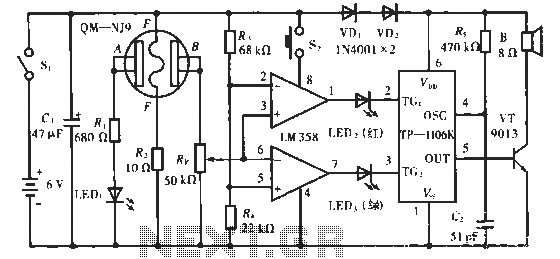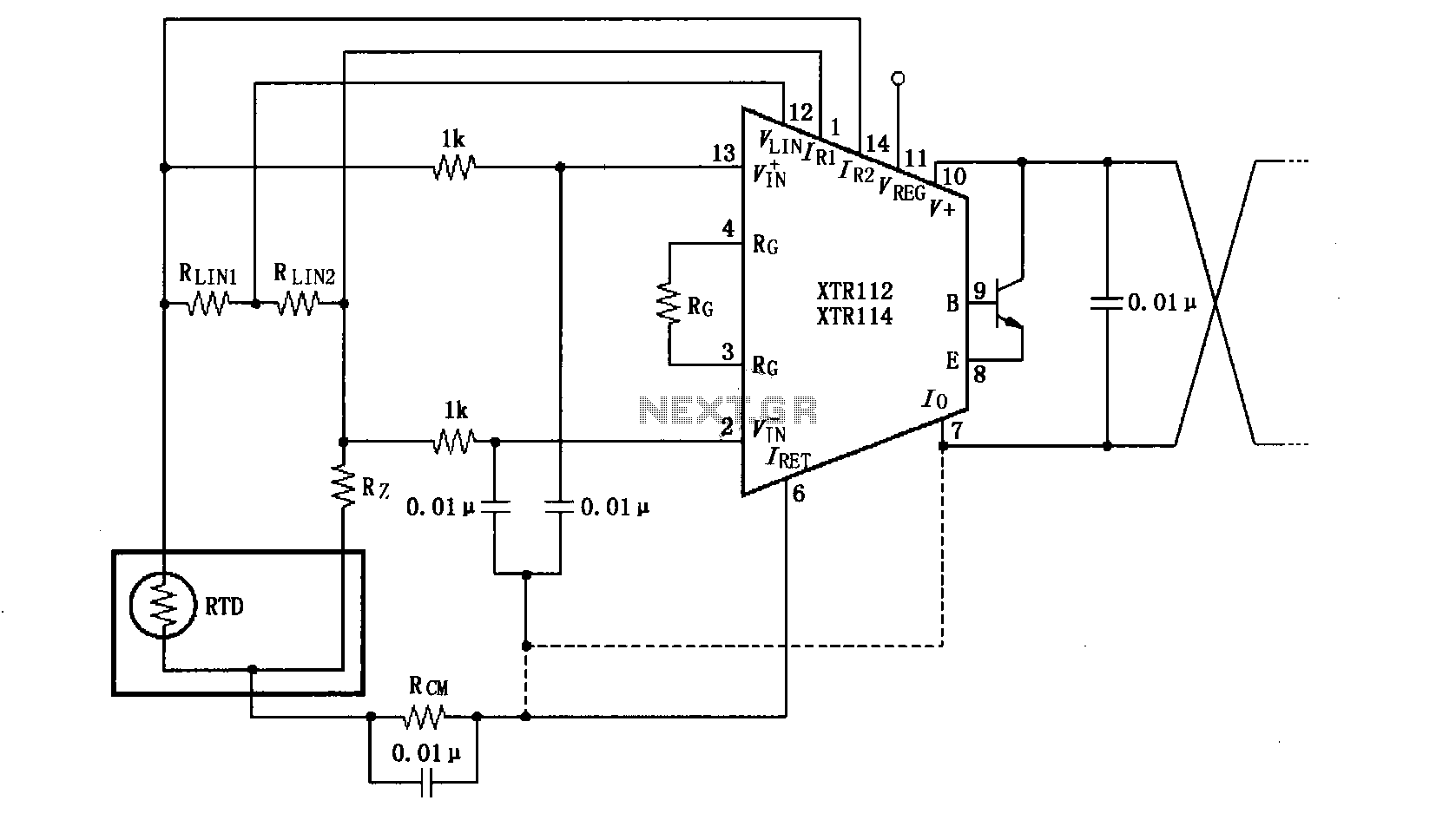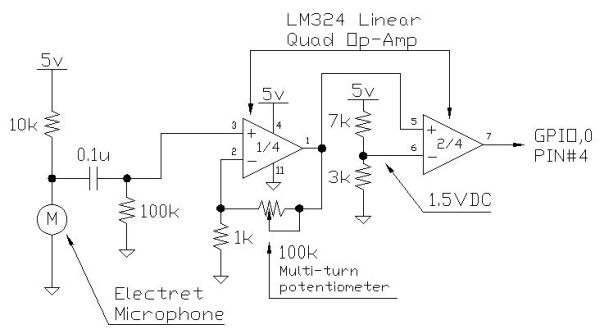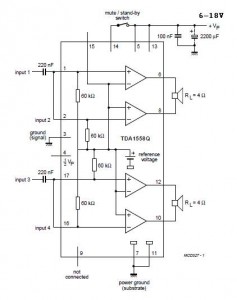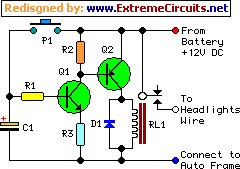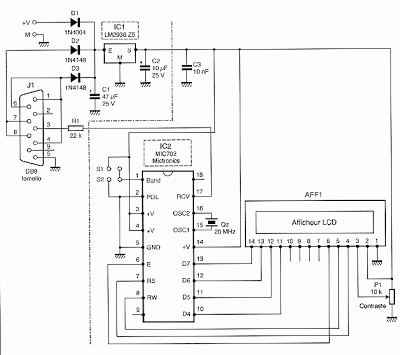
Audio frequency multiplier circuit diagram
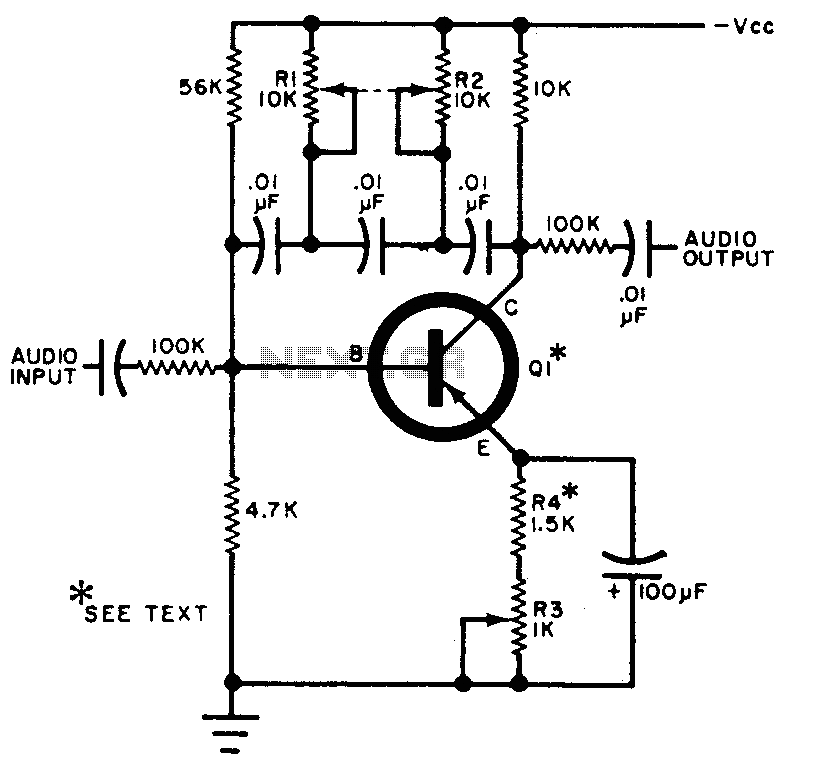
The circuit can be selectively tuned to two closely related tones. The selective frequency is determined by the values of the feedback circuit connected to the collector and base of Q1, which includes capacitors and resistors. When the specified values are applied, the frequency can be tuned around 650 Hz with a range of 100 times.
The described circuit functions as a selective frequency oscillator, primarily utilizing a transistor (Q1) in its design. The tuning capability is facilitated through a feedback mechanism that involves both capacitors and resistors. The configuration of these components directly influences the oscillation frequency, allowing for precise adjustments.
In this circuit, the feedback network is crucial for establishing the resonance condition. The capacitors are responsible for storing and releasing charge, while the resistors help control the current flow and stabilize the operating point of the transistor. By adjusting the values of these components, the user can effectively fine-tune the output frequency.
The operational frequency of approximately 650 Hz indicates that this circuit may be suitable for audio applications, such as tone generation or signal modulation. The specification of "100 times" suggests that the tuning range allows for significant variation around the central frequency, making it versatile for different applications.
To enhance the performance, it is essential to consider the quality of the components used, as well as the layout of the circuit. Proper placement of capacitors and resistors can minimize parasitic effects, which could otherwise distort the desired frequency output. Additionally, shielding and grounding techniques may be employed to reduce noise interference, thereby improving the overall stability and clarity of the oscillation.
Overall, this circuit design exemplifies the principles of selective tuning in electronic oscillators, showcasing how component values can be manipulated to achieve desired frequency characteristics.The circuit can be selectively tuned in two very close in tone. Selective frequency is determined by the value of the feedback circuit collector and the base of Q1 between the capacitors and resistors decision. When the value is the value as shown, the frequency can be tuned around 650Hz 100 times.
The described circuit functions as a selective frequency oscillator, primarily utilizing a transistor (Q1) in its design. The tuning capability is facilitated through a feedback mechanism that involves both capacitors and resistors. The configuration of these components directly influences the oscillation frequency, allowing for precise adjustments.
In this circuit, the feedback network is crucial for establishing the resonance condition. The capacitors are responsible for storing and releasing charge, while the resistors help control the current flow and stabilize the operating point of the transistor. By adjusting the values of these components, the user can effectively fine-tune the output frequency.
The operational frequency of approximately 650 Hz indicates that this circuit may be suitable for audio applications, such as tone generation or signal modulation. The specification of "100 times" suggests that the tuning range allows for significant variation around the central frequency, making it versatile for different applications.
To enhance the performance, it is essential to consider the quality of the components used, as well as the layout of the circuit. Proper placement of capacitors and resistors can minimize parasitic effects, which could otherwise distort the desired frequency output. Additionally, shielding and grounding techniques may be employed to reduce noise interference, thereby improving the overall stability and clarity of the oscillation.
Overall, this circuit design exemplifies the principles of selective tuning in electronic oscillators, showcasing how component values can be manipulated to achieve desired frequency characteristics.The circuit can be selectively tuned in two very close in tone. Selective frequency is determined by the value of the feedback circuit collector and the base of Q1 between the capacitors and resistors decision. When the value is the value as shown, the frequency can be tuned around 650Hz 100 times.
